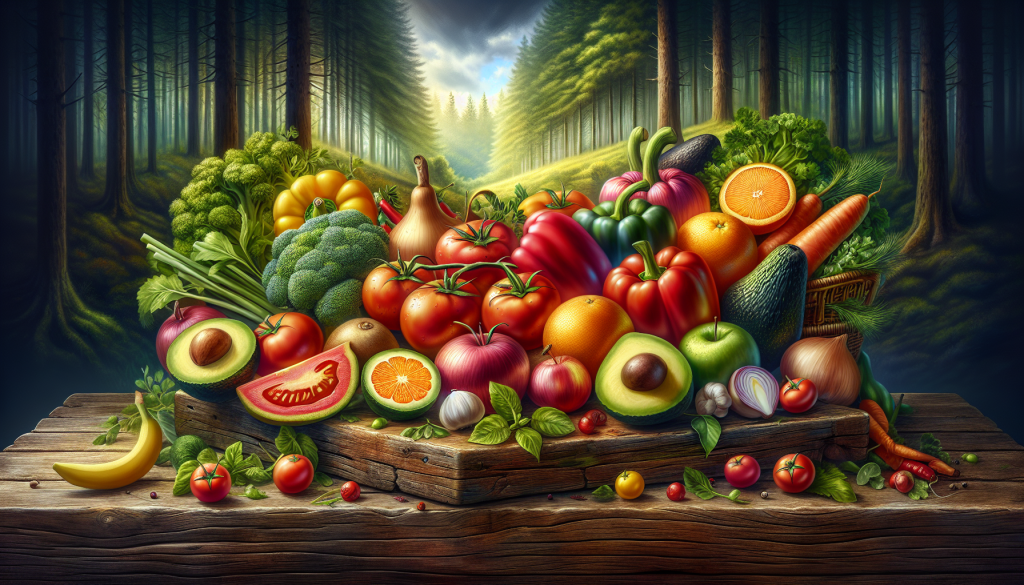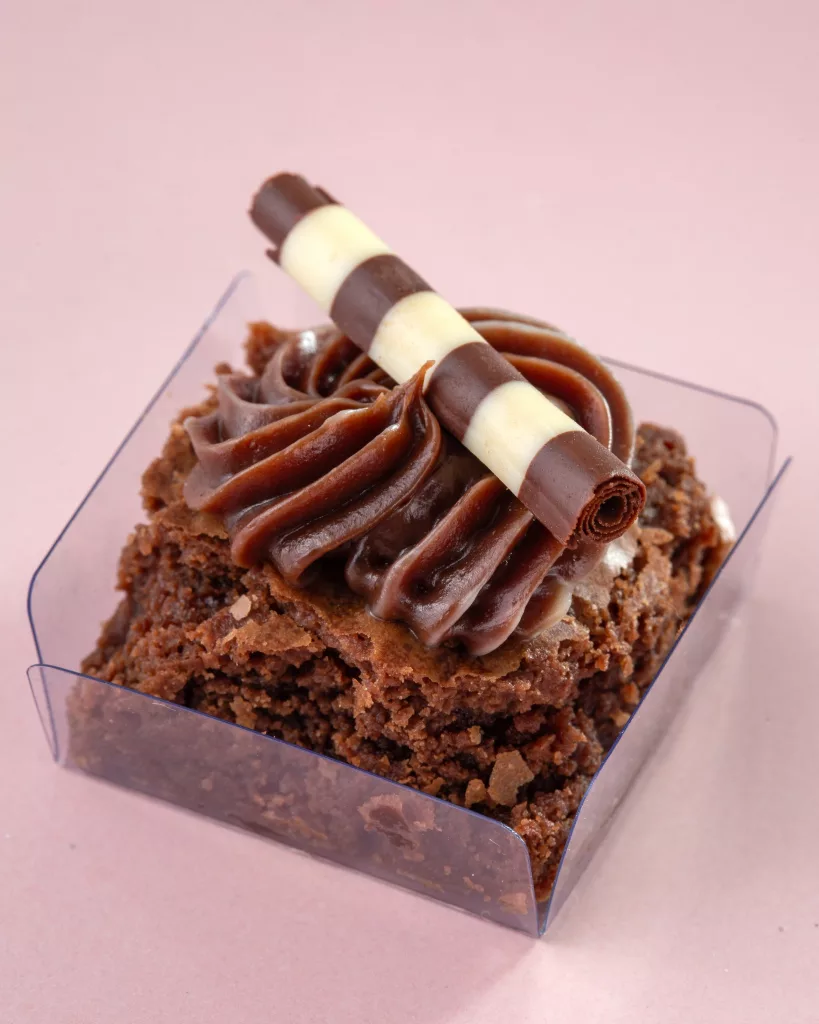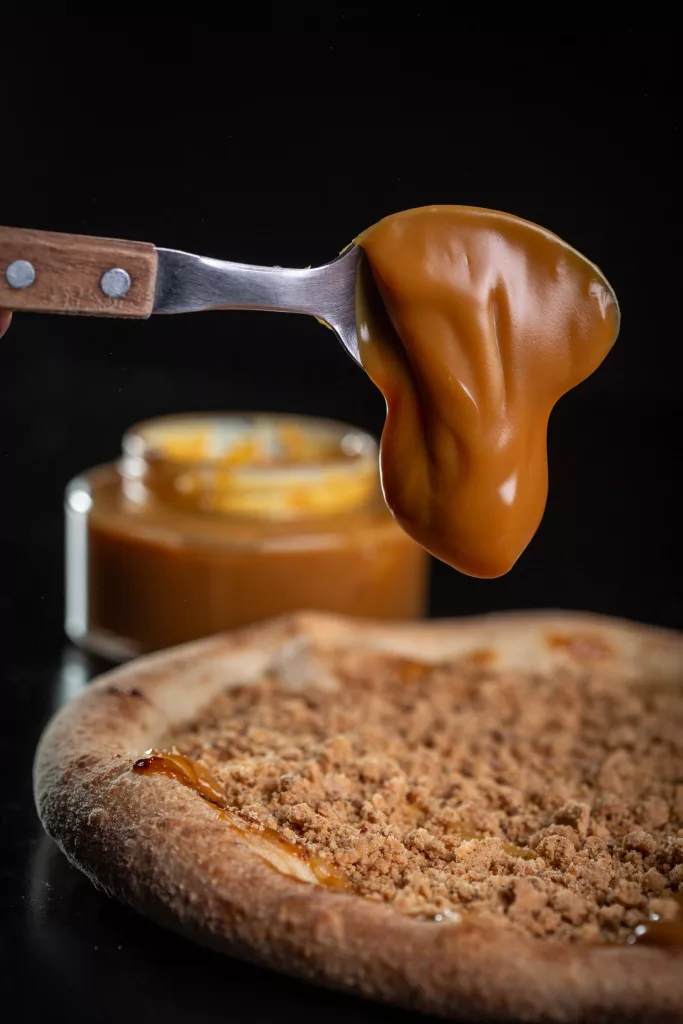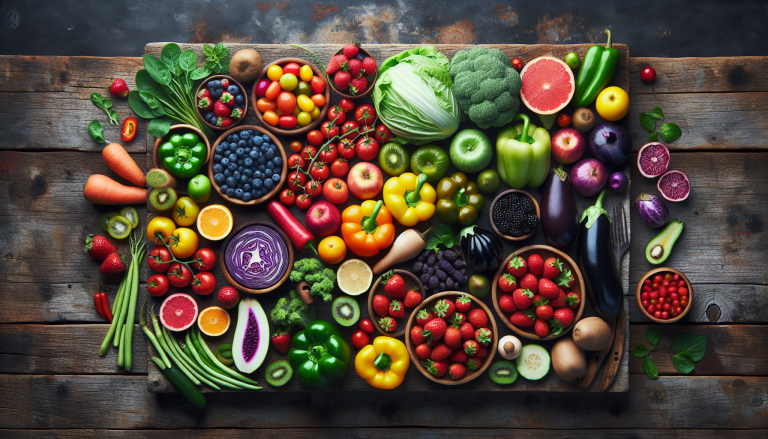Planning meals for a camping trip can be a daunting task, especially when you or someone in your group has dietary restrictions. Whether it’s a gluten-free diet, lactose intolerance, or any other special dietary restrictions and needs, ensuring everyone’s nourishment while enjoying the great outdoors requires careful consideration. This article offers helpful tips and creative ideas on how to plan delicious and satisfying meals that cater to dietary restrictions, ensuring that everyone can fully enjoy their camping experience without compromising their health or missing out on tasty meals around the campfire.

Choosing Meals Based on Dietary Restrictions
Identify dietary restrictions
When planning meals for a camping trip, it’s crucial to first identify any dietary restrictions or allergies among the group. This can include restrictions such as vegetarian or vegan diets, gluten-free or celiac-friendly meals, and lactose or dairy-free alternatives. By understanding these restrictions, you can ensure that everyone’s dietary needs are met and that everyone can enjoy their camping meals without worry.
Research suitable meal options
Once you have identified the dietary restrictions, it’s time to research suitable meal options. With the plethora of resources available online, it has become easier than ever to find recipes and meal ideas that cater to specific dietary restrictions and needs. Take advantage of recipe websites, cookbooks, and camping forums to find meal inspiration that fits within the restrictions.
Plan meals that meet dietary needs
With dietary restrictions and suitable meal options in mind, it’s time to plan the meals for your camping trip. Consider the number of breakfasts, lunches, dinners, and snacks you’ll need for the duration of your trip. Take into account the preferences and dietary restrictions of everyone in the group and create a balanced meal plan that includes a variety of flavors, textures, and nutrients. Don’t forget to consider any cooking equipment or limitations you may have while camping.
Considering Cooking Methods
Choose cooking equipment
When planning meals for a camping trip, it’s essential to consider the cooking equipment you’ll have access to. Whether you’re using a camp stove, a portable grill, or relying solely on a campfire, the equipment you have will determine the cooking methods you can employ. Make sure you have the necessary pots, pans, and utensils for your chosen cooking methods to ensure a seamless cooking experience.
Prepare meals ahead of time
To make your camping meal preparation more efficient, consider preparing meals ahead of time. Pre-chop vegetables, marinate meats, or pre-cook grains at home and store them in sealed containers or bags. This will save you time and effort on-site and allow you to focus on enjoying the camping experience rather than spending excessive time preparing meals.
Opt for simple campfire cooking
If you prefer a more traditional camping experience and plan to cook over a campfire, opt for simple campfire cooking methods. Foil packet meals, skewers, and grilling directly over the fire are all great options. These methods not only provide delicious meals but also add to the overall camping ambiance. Just make sure to practice fire safety and ensure your cooking methods are appropriate for the type of fire you are building.
Packing and Storing Food
Make a detailed shopping list
Before heading to the grocery store, take the time to make a detailed shopping list. This will help ensure that you have all the necessary ingredients for your planned meals and snacks. Check the pantry and cross off any items you already have to minimize food waste. A comprehensive shopping list will make grocery shopping a breeze and help you stay organized while packing for your camping trip.
Organize food storage
Proper organization of your food storage is essential to keep your meals fresh and to prevent any cross-contamination. Use coolers or insulated bags for perishable items such as meat and dairy. Keep fruits and vegetables separate to prevent premature spoilage. Utilize resealable containers or bags to keep ingredients organized and easily accessible. A well-organized food storage system will not only help maintain freshness but also make meal preparation a breeze.
Consider individual meal packaging
Individual meal packaging can be a convenient and practical option for camping trips. Separate and portion out meals into individual containers or bags to streamline the cooking process and minimize waste. This approach allows each person to easily grab their meal without the need for additional preparation or measuring ingredients on-site. Furthermore, it can help accommodate different dietary restrictions within the group, ensuring that everyone has a delicious and personalized meal.
Meal Ideas for Specific Dietary Restrictions
Vegetarian and vegan options
For those following a vegetarian or vegan diet, there are plenty of delicious meal options for camping trips. Consider hearty vegetable stews, bean-based chili, veggie skewers, or plant-based burgers. Pack tofu or tempeh for an excellent protein source, and don’t forget to bring a variety of fresh fruits and vegetables for snacks and sides. Be sure to check ingredient labels for hidden animal products and bring along any necessary vegan condiments or toppings to enhance the flavors of your meals.
Gluten-free and celiac-friendly meals
When planning meals for individuals with gluten intolerance or celiac disease, it’s important to ensure that every ingredient used is gluten-free. Opt for naturally gluten-free grains such as quinoa, rice, or cornmeal for side dishes and main courses. Look for gluten-free pasta or bread alternatives for sandwiches and wraps. Make sure to thoroughly clean cooking surfaces and utensils to avoid cross-contamination. With some careful meal planning and ingredient sourcing, it’s entirely possible to enjoy a gluten-free camping experience.
Lactose or dairy-free alternatives
If someone in your camping group is lactose intolerant or follows a dairy-free diet, there are numerous alternatives available to ensure they can still enjoy satisfying meals. Consider using non-dairy milk alternatives such as almond, soy, or oat milk. Explore dairy-free cheese options for those who enjoy a cheesy addition to their meals. Experiment with plant-based butter substitutes and yogurt alternatives to cater to everyone’s preferences and dietary restrictions and needs. By being mindful of these alternatives, you can ensure that your camping meals are inclusive and delicious for everyone.

Balancing Nutritional Needs
Include a variety of food groups
When planning meals for a camping trip, it’s important to include a variety of food groups to ensure balanced nutrition. Aim to incorporate fruits, vegetables, whole grains, lean proteins, and healthy fats into every meal. For example, you can have oatmeal with assorted fruits and nuts for breakfast, grilled chicken with roasted vegetables for lunch, and fish tacos with avocado for dinner. By including a wide range of food groups, you can fuel your body properly and keep everyone energized throughout the camping adventure.
Focus on whole foods
While it can be tempting to rely on processed or packaged foods for convenience while camping, it’s important to prioritize whole foods whenever possible. Incorporate fresh fruits and vegetables, whole grains, and unprocessed proteins into your meals. For snacks, opt for nuts, seeds, or dried fruits instead of heavily processed snacks. Whole foods provide essential nutrients and are generally healthier and more satisfying, ensuring that you and your camping companions are properly nourished during your outdoor escapades.
Calculate caloric needs
It’s essential to consider the caloric needs of each person when planning camping meals. Factors such as age, gender, activity level, and any pre-existing health conditions can influence an individual’s calorie requirements. Use online calculators or consult with a healthcare professional to estimate the appropriate caloric intake for each person in your group. This information will help guide your meal planning and ensure that everyone receives adequate nourishment throughout the camping trip.
Snacks and Quick Meals
Pack convenient and nutritious snacks
Alongside your planned meals, it’s important to pack convenient and nutritious snacks for those times when hunger strikes between meals or during outdoor activities. Opt for trail mix, granola bars, fresh fruit, or pre-cut vegetables for quick and easy snacking options. Consider individual portion sizes, especially if you’re planning longer hikes or activities that require sustained energy. These snacks will not only keep everyone satisfied but also provide the fuel needed to fully enjoy all the camping adventures.
Consider no-cook meal options
Sometimes, you may find yourself without the means to cook a meal, or you may prefer a quick no-cook option. Incorporate no-cook meal options into your camping menu to add variety and convenience. For example, sandwiches with deli meat or plant-based alternatives, hummus and veggie wraps, or pre-made salads can be excellent choices. These no-cook meals are quick to assemble, require minimal cleanup, and still provide a satisfying and nutritious meal option for campers on the go.

Food Safety and Hygiene
Practice proper food handling
Maintaining proper food handling practices is crucial to prevent foodborne illnesses and ensure that your camping meals are safe to consume. Wash your hands thoroughly with soap and water before and after handling food. Keep all raw meats and vegetables separate to avoid cross-contamination. Use a food thermometer to ensure that meat is cooked to a safe internal temperature. Follow the guidelines for safe food storage and discard any perishable items that have been left out for an extended period. By practicing proper food handling, you can minimize the risk of foodborne illnesses and protect the health of your fellow campers.
Keep perishable foods at a safe temperature
When camping, it’s important to keep perishable foods at a safe temperature to prevent spoilage and the growth of harmful bacteria. Use coolers or insulated containers with ice packs to keep meats, dairy products, and other perishables cold. Store the cooler in a shaded area and avoid opening it frequently to maintain the internal temperature. When cooking, keep hot foods at a safe temperature by ensuring they are thoroughly cooked and transferring them to insulated containers or keeping them on a heated surface until ready to eat. By maintaining safe temperatures, you can keep your food fresh and safe for consumption throughout your camping trip.
Maintain personal hygiene
Personal hygiene is not only important for individual comfort but also for preventing the spread of bacteria and ensuring food safety. Encourage everyone in your camping group to practice good personal hygiene habits. This includes washing hands thoroughly before and after handling food, using hand sanitizer when running water is not readily available, and cleaning utensils and cooking equipment regularly. By maintaining personal hygiene, you can further reduce the risk of foodborne illnesses and create a healthier camping environment for everyone.
Meal Planning for Different Trip Durations
Adjust portion sizes for trip length
When planning meals for different trip durations, it’s crucial to adjust portion sizes accordingly. For shorter trips, consider packing individual portions for each meal to minimize waste and ensure that everyone has enough to eat. However, for longer trips, you may need to rely on larger portions or even family-style meals to accommodate the increased number of meals required. By adjusting portion sizes, you can ensure that everyone is adequately nourished throughout the entirety of your camping adventure.
Prioritize non-perishable foods for longer trips
For longer camping trips, it’s important to prioritize non-perishable foods to ensure you have enough supplies that will last without spoiling. Canned goods, dehydrated meals, dried fruits, nuts, and nut butters are all excellent options to consider. These non-perishable items are lightweight, easy to transport, and can provide the necessary sustenance for an extended period. Combine non-perishable items with fresh ingredients when possible to maintain a balanced and varied diet throughout your trip.

Tips for Meal Preparation and Cleanup
Use pre-cut/prepped ingredients
To streamline meal preparation at the campsite, consider using pre-cut or pre-prepped ingredients. Before leaving for your camping trip, pre-chop vegetables, separate herbs, and marinade meats in resealable bags or containers. This preparation will save you time and effort on-site, making meal preparation quick and efficient. Additionally, consider pre-measuring spices and seasonings in small containers to eliminate the need to carry large and bulky spice jars. By utilizing pre-cut and pre-prepped ingredients, you can enjoy delicious meals without spending excessive time and effort on preparation.
Minimize waste and pack out trash
When camping, it’s important to leave no trace and minimize waste. Plan your meals with this in mind by opting for minimal packaging and reusable containers. This reduces the amount of waste generated and the need to dispose of excessive packaging while in the great outdoors. Pack out all trash and leftovers without leaving any behind. This ensures that the environment remains pristine and ready for future campers to enjoy.
Clean cooking equipment properly
Proper cleaning of cooking equipment is essential to prevent food contamination and maintain their quality and longevity. Whether you’re using a camp stove, grill, or other cooking equipment, make sure to clean them thoroughly after each use. Use environmentally-friendly dish soap and warm water to remove food residues, and scrub with a sponge or brush. Rinse off all soap residue and air dry or use a clean towel to ensure that your cooking equipment is clean and ready for the next use. By practicing proper cleaning techniques, you can prevent the growth of harmful bacteria and prolong the lifespan of your cooking equipment.
Enjoying the Camping Experience
Plan meals around camp activities
To fully enjoy the camping experience, consider planning meals around camp activities. If you have an active day of hiking or swimming planned, opt for lighter meals that provide quick energy. On the other hand, if you have a more relaxed day around the campsite, indulge in meals that require longer cooking times or more elaborate preparations. Tailoring your meals to your daily activities will not only enhance your camping adventure but also make mealtime a memorable part of the overall experience.
Share cooking duties with others
Meal preparation and cooking can be a shared activity, providing an opportunity for everyone in your camping group to contribute and bond. Assign different cooking duties to each person, allowing them to showcase their culinary skills and preferences. This division of labor will lighten the load for everyone and ensure that meal preparation is a collaborative and enjoyable experience. Sharing cooking duties also allows for a wider variety of meals and flavors, making every mealtime a delightful surprise.
Indulge in occasional treats
While it’s important to prioritize nutritious meals while camping, don’t forget to indulge in occasional treats. Whether it’s toasted marshmallows over a campfire, homemade s’mores, or a small bag of chips, these treats can add an extra layer of enjoyment to your camping experience. After a day of outdoor activities and cooking, treat yourself and your fellow campers to a small indulgence to celebrate the adventures of the day. Just remember to practice moderation and balance to ensure a healthy and enjoyable camping trip.
In conclusion, proper meal planning for a camping trip, especially when considering dietary restrictions, requires careful consideration of individual needs, suitable meal options, cooking methods, and food safety practices. When armed with the knowledge of dietary restrictions and meal alternatives, you can plan delicious and satisfying meals. Proper packing and storing of food, as well as individual meal packaging, contributes to overall efficiency and organization of your meals. Balance your group’s nutritional needs by including a variety of food groups, focus on whole foods, and calculate appropriate caloric intake. Maintaining food safety and personal hygiene is vital, so be sure to handle food properly and keep perishable foods at safe temperatures. Prioritize non-perishable foods for longer adventures.
Adopting tips for meal preparation and cleanup, such as using pre-cut ingredients and minimizing waste, will facilitate a smooth mealtime experience. Ultimately, embracing the camping experience means planning meals around camp activities, sharing cooking duties, and indulging in occasional treats. Now, armed with these comprehensive guidelines, you’re ready to embark on a camping trip where delicious and satisfying meals await you. Happy camping and bon appétit!
Browse the page for 30 seconds to reveal the link
30

